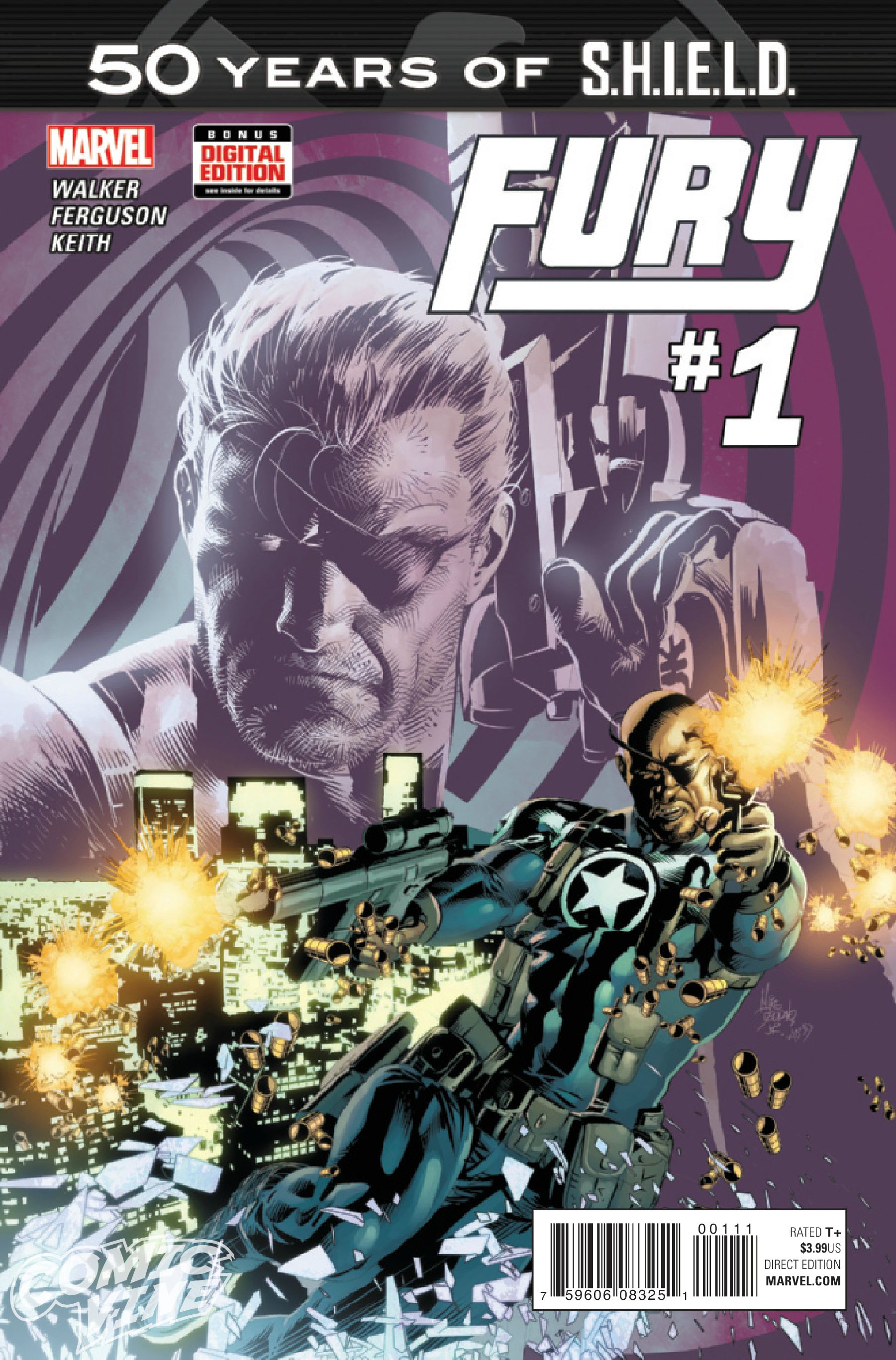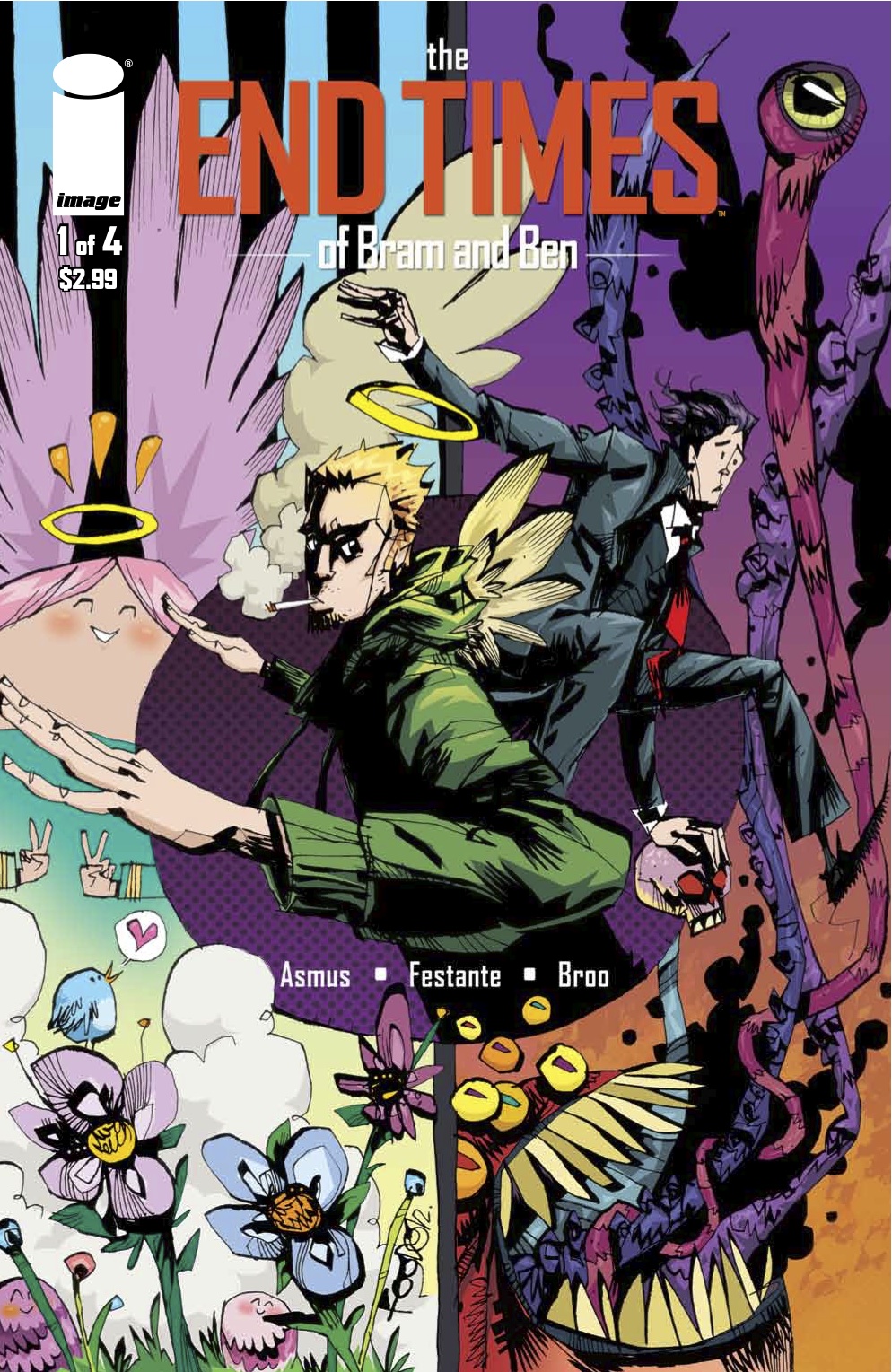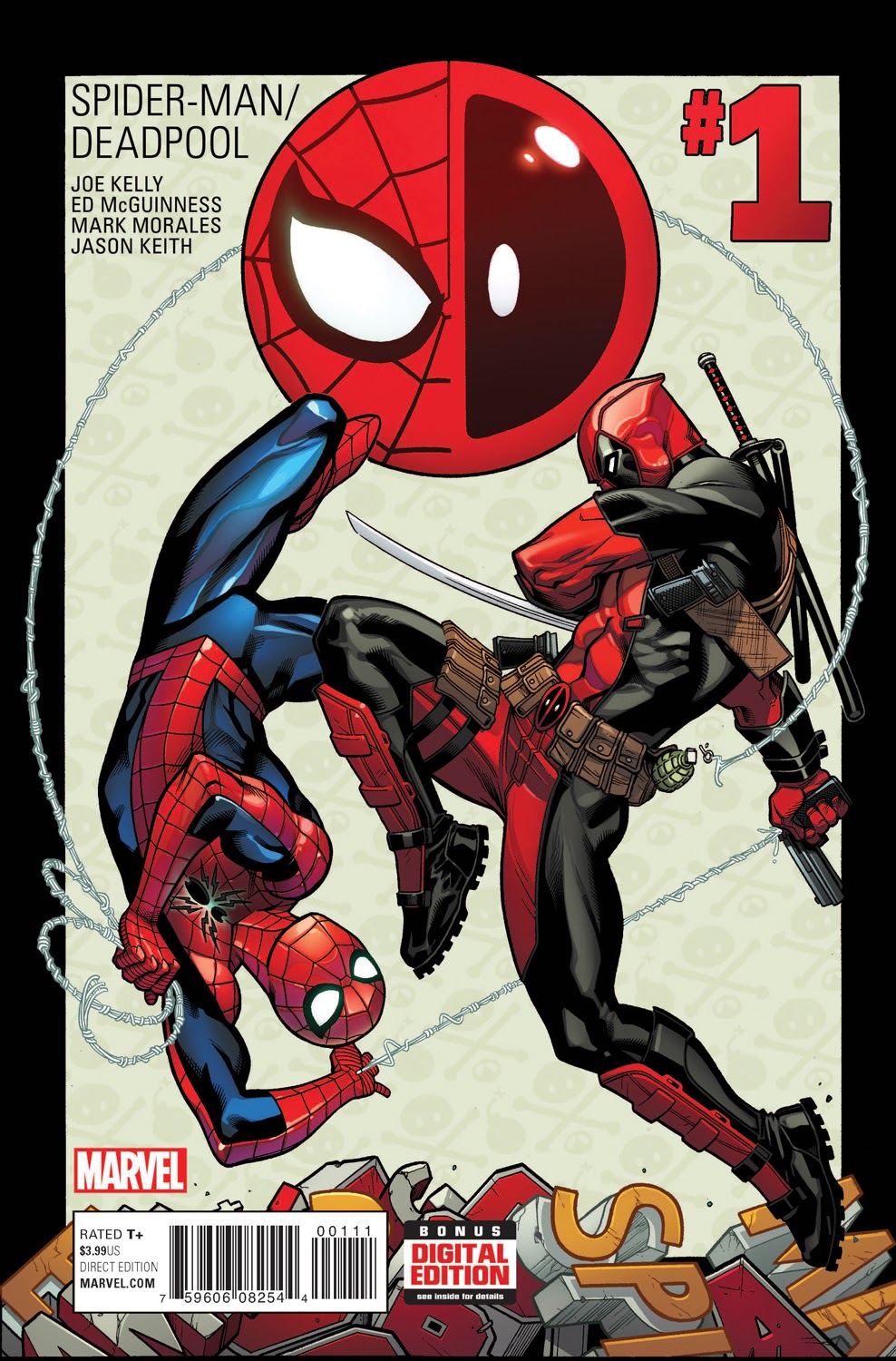Fury #1
Writer – David F. Walker
Artist – Lee Ferguson
Color Artist – Jason Keith
Letterer – VC’s Clayton Cowles
Review by Joey Braccino
“Good luck, Junior. Be seein’ ya.”

Regardless of which Fury we’re talking about, it would have been impossible to do a 50 Years of SHIELD anniversary run without including our eye-patched eye-in-the-sky. Particularly in the modern era, in which SHIELD has taken a front-seat in orchestrating and instigating conflict after conflict in the Marvel Universe (practically all of the 2000s happened because of Fury Sr.’s Secret War, by Brian Michael Bendis and Gabriele Del’Otto), Nick Fury and SHIELD has served as the perfect allegory for the American security vs. freedom dilemma. Fury has always been portrayed as the master spy, the man in the chair burdened with defending the entire world with intelligence and force if needs be. When Fury Sr. was shelved, Fury Jr. had to do the same, but had the whole legacy angle added to it. Whether you’re a fan of how Fury Jr. was introduced and integrated into the Marvel U, the character has made his impact and efficacy as a character in series like Secret Avengers.
So here we are with Fury #1 by David F. Walker (of Shaft and Cyborg fame) and Lee Ferguson. And I am glad to say that it is a remarkable comic book that blends ideas of legacy, hatred, and American idealism into a fantastic story featuring not one, but two Nick Fury’s in action.
We open with a brilliant series of parallel panel sequences: on one side of the page, Nick Fury, Gabe Jones, and Dum Dum Dugan dealing with the Watts Riots in 1965; on the other side, Nick Fury, Jr., and Maria Hill pursuing the Hate Monger (a holdover to David Liss and Francesco Francavilla’s run on Black Panther: Man Without Fear) in the present day. Walker very clearly establishes the racial undertones and implications in each thread, focusing on Fury Sr.’s shock at the degradation of American society as well as Fury Jr.’s cynicism at realizing that this hatred has become the norm. I half-expected these two parallel stories to continue side-by-side for the remainder of the book, but in classic Marvel fashion, Fury Jr. is whisked back into the past and comes face-to-face with his father, and their two missions—the Riots and the Hate Monger—merge into one.
As we watch Fury Sr. and “Junior” (he refused to identify himself as Nick Fury’s son due to temporal policy) interact, we’re reminded of Nick Fury Sr.’s actual role in the Marvel Universe—the role he had before he was the man in front of countless screens in secret bases with LMDs and back-up plans for back-up plans: he, like (because of?) Captain America, was a defender of his country. A soldier and a leader, Fury sees the riots as shocking because he still believes in the ideals of freedom and democracy. Walker brilliantly juxtaposes Fury Jr.’s view of his father as the Secret Warrior, ends-justify-the-means superspy with this freedom fighter who has come into this new power with SHIELD and still sees the good that can be done.
The one-shot builds to a wonderful, moving climax that strings together all of the historicity and character movement of what comes before, and that features a surprising but incredibly effective cameo.
Lee Ferguson’s artwork is on-point throughout. After from the exceptional layouts and sequencing in that parallel opening, Ferguson’s dynamic realism is exactly what this gritty, historical story calls for. Nevertheless, his naturalism is interrupted with moments of vigor and abstraction, moments that in the narrative are marked by rage and violence. Jason Keith mixes stark reds and burnt oranges into those moments, playing on the visceral rage of the characters in these trying times.
Verdict
Check it! David F. Walker and Company deliver a one-shot like you’re supposed to deliver a one-shot: contained and straightforward, yes, but powerful nonetheless. Furthermore, Walker’s ability to reach into the core of both Nick Fury Sr. and Nick Fury Jr. allows him to drop our two eponymous spies into history seamlessly. And, unlike the Quake or Mockingbird one-shots, there are no forced retcon to sate the studios here—just a well-executed, socially relevant comic book that stays true (and celebrates) the canonical core of its titular hero(es). Isn’t that what anniversary issues are supposed to do?
Bonus: Check out this rad interview with David F. Walker over at AV Club from earlier this year in which he goes into detail about Black Identity, Pop Culture, and his work on Shaft and Cyborg!











